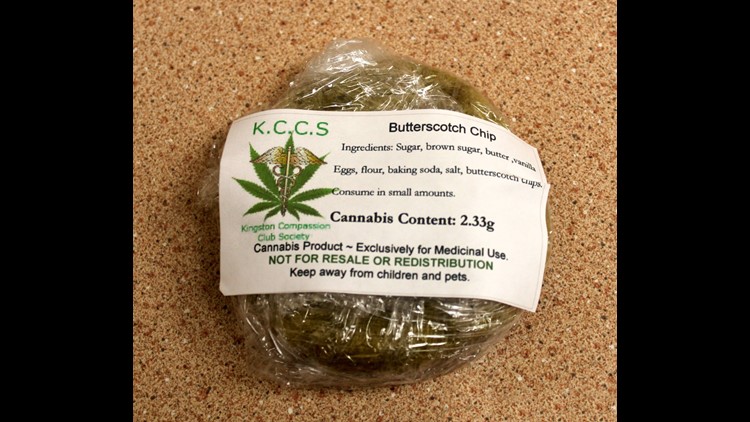SACRAMENTO — Marijuana edibles have come a long way.
Once only known as pot brownies, medical marijuana patients in California can now buy treats such as chocolates, mints, honey sticks, gum and even drinks. Many medical patients and their doctors know the benefit of eating pot, instead of smoking it.
“Just because it has so much longer-lasting effects, it’s so much more affordable than smoking, and it’s easier on the lungs,” Donald Davies, manager of Canna Care dispensary in Sacramento, told FOX40.
With recreational marijuana now legal in California, the companies that make these products are ramping up their production. The general public can buy edibles for recreational use on January 1, 2018.
One large California-based edible manufacturer is Kiva Confections. Kiva keeps its address in Oakland a secret, to deter burglars. But Scott Palmer, CEO and founder of Kiva, allowed FOX40 cameras to come inside for a behind-the-scenes tour, to see how edibles are made.
In a warehouse, workers mix ground marijuana with chocolate and other ingredients, to make Kiva’s signature marijuana chocolate bars.
“The actives in the flavors are mixed in the chocolate tanks over there, and allowed to homogenize for a period of about 12 hours,” explained Palmer.
Other workers vibrate the bars, removing the air bubbles from the bottom of the mold they are forming in. The California Department of Public Health says these pot edibles are not considered a food, or a drug, leaving them somewhere in between.
“It’s a lot of grey area, yeah,” Palmer admitted to FOX40.
Kiva is just one of many edible manufacturers in the business waiting for the state to announce the new regulations for recreational sales. Those rules are expected sometime in the next few months, and will go into effect January 1, 2018. Although Kiva handles food products, the Department of Public Health told FOX40 it is not currently inspecting or enforcing health codes at edible facilities.
“A lot of the things we’ve been doing have been sort of under the unregulated side of it,” said Palmer.
So Palmer says Kiva has put into place their own health standards, based on generally accepted manufacturing practices found in other food products. Currently Kiva products are sold in more than 900 dispensaries across the state. And if Colorado is any indication, sales are expected to boom once companies can start selling to the general public.
“Some companies that were doing edible products saw an overnight bump as high as three or four times what they had seen under the medical market”, Palmer told FOX40.
That means Palmer’s employees will be filling a lot more chocolate boxes and mint tins to be shipped out. But Palmer and others in the industry still don’t know what warnings their products’ wrappings will need to have. Palmer says, his company is considering artwork that appeals to adults, not kids, to prevent kids from accidentally consuming it. But not everyone thinks that will work.
“I have five children. I know what my little 5-year-old would do when they saw candy in the bathroom. They would eat it”, said Jon Daily, addiction counselor.
According to Daily, emergency rooms are already seeing between three and five cases weekly involving marijuana edibles. He warns, with greater access coming next year, those problems will grow.
“What looks like a gummy bear, what looks like a candy bar — all bets are off,” said Daily.
When it comes to edibles, experts say dosages aren’t clear-cut. How much you should eat depends on factors like tolerance and weight, meaning a safe dose for one person may be too much for another.
“We always recommend, if you don’t have any experience with cannabis at all, you don’t smoke, you don’t consume edibles, and you’re trying one of our products for the first time, we believe 5 milligrams is a great starting dose,” Palmer told FOX40.
The potency of THC, the active ingredient in marijuana, is higher when eaten. The drug’s affects can also last hours longer, and there may be a delayed effect.
“It takes 45 minutes to an hour and a half for this stuff to start to work,” warned Daily.
Because of this delay, the potential risk of eating too much of the drug is greater.
“I know if I had one bite of chocolate, I’m not going to stop there. And I probably didn’t read the label, and if I had one bite I’m going to want more,” Daily said.
But Palmer says his company is aware of those dangers. Kiva labels its products with a large warning, telling users exactly how much cannabis they contain, and to keep them away from kids.
“We want to make sure that patients see that it’s a cannabis product from the first time they ever see our products, basically. That takes precedent over anything else,” Palmer explained.
It’s another reason Kiva is anxiously awaiting the state’s regulations.
“I think we are just seeing a lack of oversight that we completely welcome into the space,” Palmer said.



